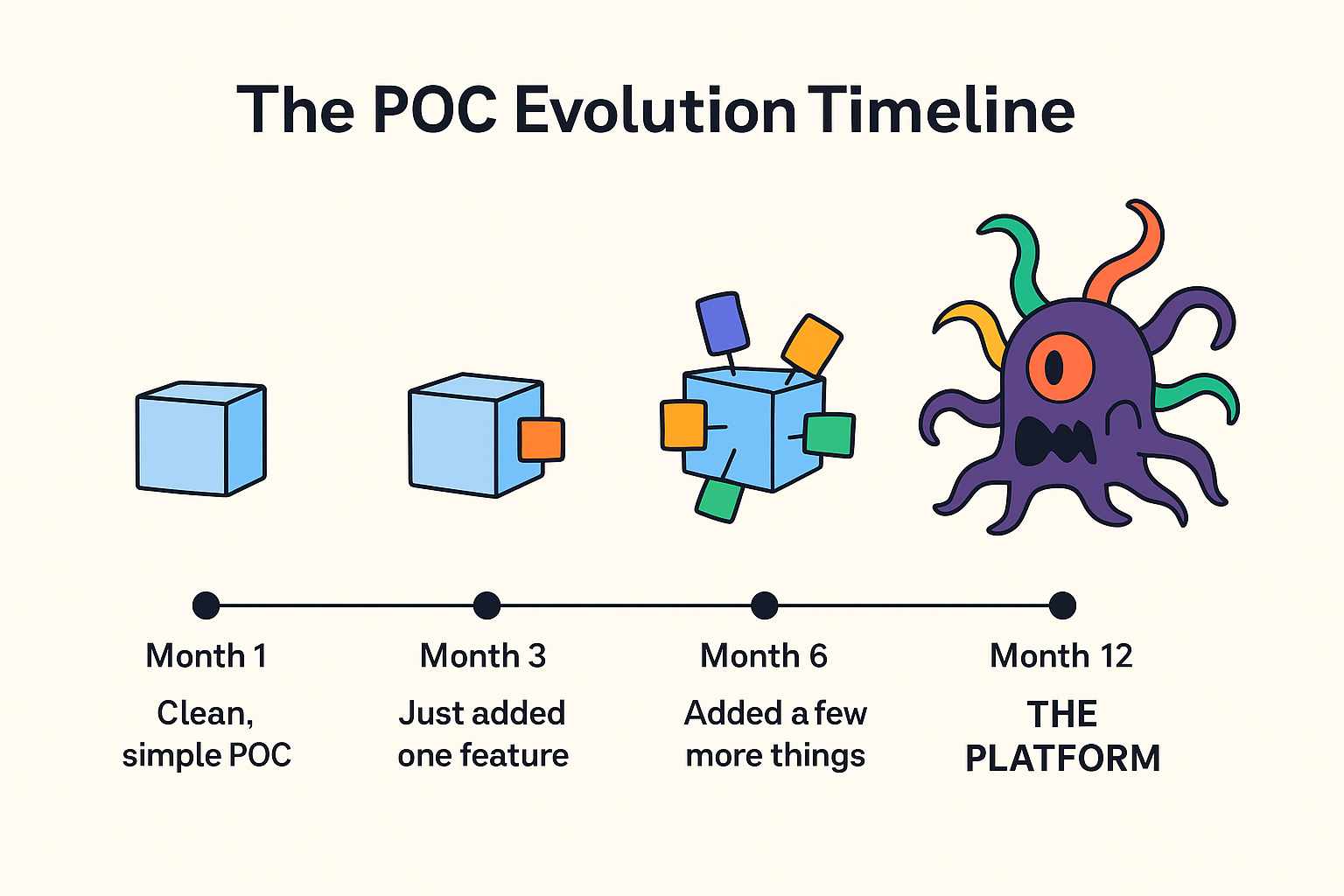October 20, 2025

Everyone loves building a proof of concept. It’s cheap, low stakes, and nobody expects it to do everything.
The problem? The POC never dies.
Here’s what actually happens:
You build a POC. Parts of it work great. Parts of it… well, you ignore those parts and build the next thing you need on top of it.
Then someone needs something else. You bolt that on too.
Six months later, you’re calling it “The Platform.”
But really, it’s a Frankenstein monster of every POC you ever built, duct-taped together. The database schema makes no sense because it’s solving five unrelated problems. The code is a maze that only one person understands. You’re one resignation away from disaster.
𝗛𝗼𝘄 𝘁𝗵𝗶𝘀 𝗵𝗮𝗽𝗽𝗲𝗻𝘀:
→ POC works well enough, so why start over?
→ Adding to existing code is faster than building from scratch
→ You don’t realize you’re building a platform until you already have one
→ Each addition makes sense in isolation
→ Nobody wants to be the person who says “we need to rebuild this”
𝗪𝗵𝗮𝘁 𝘆𝗼𝘂 𝘀𝗵𝗼𝘂𝗹𝗱 𝗱𝗼 𝗶𝗻𝘀𝘁𝗲𝗮𝗱:
→ Treat each POC as disposable. If you’re keeping it, it’s not a POC anymore—rebuild it properly.
→ Modularize as you develop. Pull utility functions into their own reusable modules from the start.
→ New functionality = new POC. Don’t bolt it onto the old thing just because it’s there.
→ Accept the upfront cost. Yes, starting fresh takes longer. Yes, it’s worth it.
→ Name things honestly. If you’re maintaining it long-term, stop calling it a POC. Acknowledge you’re building infrastructure.
I’ve seen this pattern a lot. The POC that becomes “The Platform” is usually the most fragile, hardest-to-maintain piece of infrastructure in the entire organization.
The best POCs teach you what to build next—then get retired.
What POC is haunting your codebase right now? 👻 Have you inherited a POC-turned-platform? What’s your strategy for untangling it?



